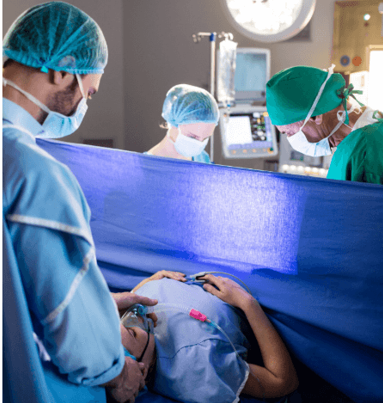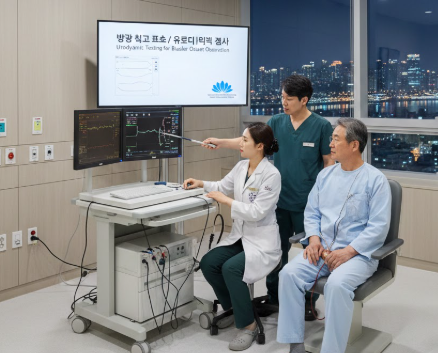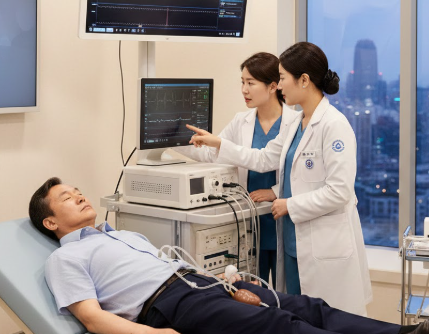Treatment Overview
The Laser-Assisted Laparoscopic Uterus Removal (LALUR) in Korea is an advanced form of minimally invasive hysterectomy that utilizes precision laser technology to remove the uterus with exceptional accuracy, minimal bleeding, and reduced trauma to surrounding tissues. This next-generation surgical technique merges high-definition laparoscopy with laser-assisted dissection, allowing surgeons to target affected uterine tissue while preserving nearby structures for faster and smoother recovery.
Korea is internationally recognized as a leader in gynecologic laser surgery. With world-class equipment, including CO₂ lasers, Er:YAG lasers, and dual-laser systems, Korean hospitals offer cutting-edge uterus removal solutions tailored to each patient’s anatomy and condition. The combination of surgical expertise, laser precision, and comprehensive postoperative care makes Korea one of the top destinations for laser-assisted laparoscopic hysterectomy.
Purpose & Benefits
Purpose:
- Provide a minimally invasive and blood-sparing method for uterus removal
- Treat uterine conditions such as fibroids, adenomyosis, endometriosis, or cancer
- Enhance surgical accuracy and minimize tissue damage during hysterectomy
Benefits:
- Exceptional precision in tissue cutting and coagulation
- Minimal blood loss and reduced postoperative pain
- Shorter hospital stay (usually 1–2 days) and faster recovery
- Smaller incisions with excellent cosmetic results
- Reduced risk of adhesions and postoperative complications
- Enhanced healing with less inflammation and scarring
Ideal Candidates
LALUR is suitable for women who:
- Require uterus removal due to benign or malignant conditions
- Prefer a minimally invasive procedure with advanced technology
- Seek faster recovery and reduced postoperative discomfort
- Are suitable for laparoscopic surgery
- Wish to minimize scarring and tissue trauma
Korean specialists perform detailed preoperative evaluations, including imaging and health assessments, to confirm eligibility and tailor the treatment plan.
Possible Risks & Complications
Laser-assisted laparoscopic surgery is extremely safe when performed by skilled Korean surgeons, but minor risks may include:
- Mild bleeding or infection
- Temporary urinary or bowel discomfort
- Injury to adjacent pelvic organs (rare)
- Anesthesia-related side effects
- Rare adhesion formation or delayed healing
Korea’s advanced imaging systems, surgical precision, and real-time laser control systems greatly reduce these risks.
Surgical Techniques Used
Korean hospitals employ some of the most advanced surgical systems in the world for LALUR, including:
- High-Definition Laparoscopic Visualization: Provides superior anatomical detail.
- CO₂ and Er:YAG Laser Systems: Enable precise cutting and coagulation with minimal tissue damage.
- Fluorescence-Guided Surgery (ICG): Ensures safe identification of blood vessels and vital structures.
- Energy-Sealing Devices and Laser Coagulation: Reduce bleeding and enhance precision.
- Single-Port or Multi-Port Laparoscopy: Minimizes incisions based on the patient’s condition.
This combination of technologies ensures safe, precise, and cosmetically refined outcomes.
Recovery & Aftercare
Recovery from LALUR is typically quicker than with conventional laparoscopic or open hysterectomy. Most patients can return home within 24–48 hours and resume light activities in one week.
Postoperative care includes:
- Pain management and wound care
- Avoiding strenuous activities for 4–6 weeks
- Routine follow-up visits
- Pelvic floor and physiotherapy sessions, if needed
- Nutritional and hormonal support to aid recovery
Korean hospitals often provide personalized recovery programs, combining physiotherapy, hormonal assessment, and lifestyle guidance to ensure optimal healing.
Results & Longevity
LALUR offers outstanding long-term results:
- Complete removal of the uterus with minimal tissue damage
- Smooth recovery and minimal scarring
- Excellent cosmetic and functional outcomes
- Reduced risk of infection and adhesions
- Long-lasting improvement in pelvic health and comfort
Korean gynecologic surgeons focus on both immediate results and sustained wellbeing, ensuring each patient enjoys long-term benefits.
Treatment Process in Korea
Korea’s LALUR process is structured and patient-oriented:
- Comprehensive Preoperative Evaluation: Includes imaging (MRI or ultrasound), blood tests, and consultation.
- Personalized Surgical Planning: Based on uterine condition, anatomy, and desired outcomes.
- Laser-Assisted Laparoscopic Surgery: Performed with advanced visualization and precision lasers.
- Postoperative Recovery: Managed through physiotherapy, nutritional counseling, and follow-up care.
Korean hospitals offer world-class infrastructure, multilingual patient support, and internationally accredited safety standards—making them a top choice for advanced hysterectomy care.
Cost Range
The Laser-Assisted Laparoscopic Uterus Removal in Korea typically costs between USD 9,000 and 16,000, depending on:
- Type and complexity of the case
- Hospital and surgeon expertise
- Laser system used (CO₂, Er:YAG, or hybrid systems)
- Postoperative recovery and additional therapies
This cost usually includes preoperative evaluation, surgery, anesthesia, hospitalization, and aftercare.
Popular Clinics
- Samsung Medical Center (Seoul): Known for laser-integrated laparoscopic and robotic hysterectomy systems.
- Asan Medical Center (Seoul): Offers CO₂ laser-assisted uterus removal with rapid recovery protocols.
- Severance Hospital (Yonsei University Health System, Seoul): A leader in advanced laser gynecologic surgery.
- CHA Gangnam Medical Center: Specializes in minimally invasive and energy-based laparoscopic surgeries.
- Ewha Womans University Medical Center: Focused on precision laser-assisted women’s health surgery with holistic care.




